Understanding the Difference Between Sapphic, Lesbian, and Crossdresser
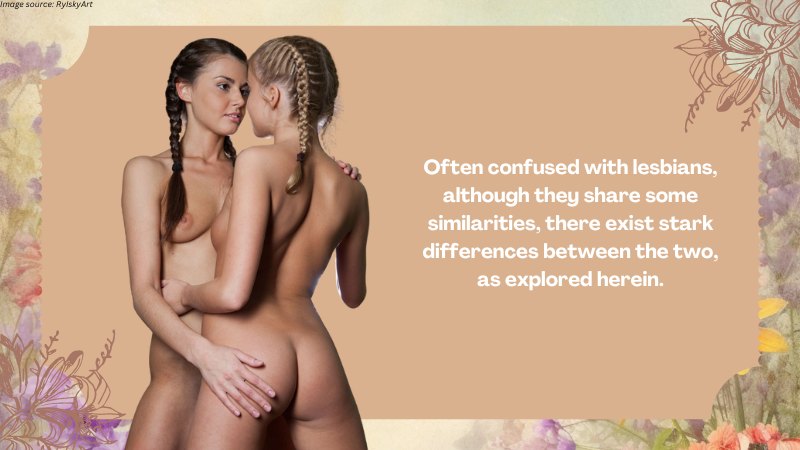
Ah, women, so much love for them, so a goddess dedicated her life to writing poems about them to create the term; ‘Sapphic.’ Sapphic, as fancy and sophisticated as the term seems, simply entails women who find endearment, fun, and love in loving other women (WLW). After all, isn’t sisterhood beautiful? Hence, any masc, femmes, and non-binary folks who possess any attraction towards women can be said to be Sapphic. Often confused with lesbians, although they share some similarities, there exist stark differences between the two, as explored herein.
Who Is a Sapphic, a Lesbian, and a Crossdresser
Understanding how different gender identities come into play is important to understand and differentiate the following terms.
Lesbian
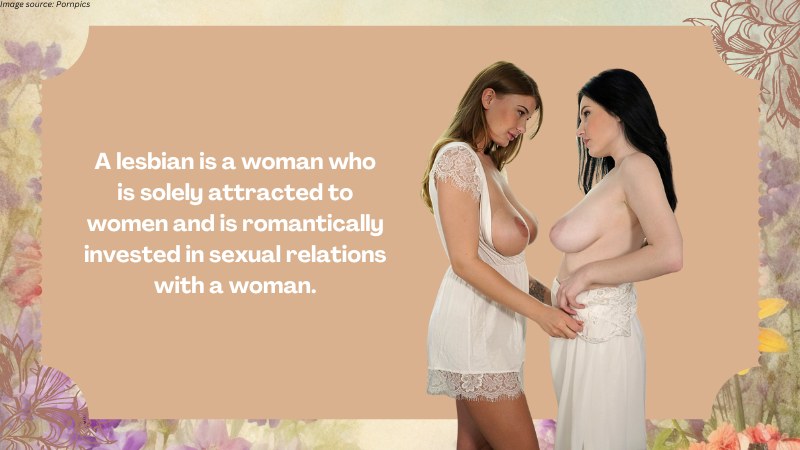
A lesbian is a woman who is solely attracted to women and is romantically invested in sexual relations with a woman.
A lesbian can be a femme, meaning a lesbian whose demeanor or behavior is traditionally feminine; thus, they carry the feminine stance.
On the other hand, a masculine lesbian (masc) can carry the masculine stance in a lesbian relationship or interaction by embodying masculine behavior.
Sapphic
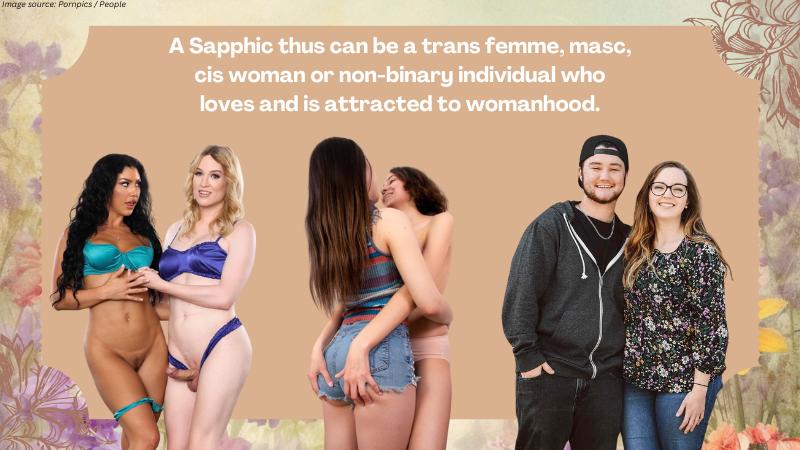
In its simplest form, a sapphic is a woman lover. A sapphic can thus be a trans femme, masc, cis woman, or non-binary individual who loves and is attracted to womanhood.
A sapphic loves and is attracted to the whole and nuanced version of womanhood, making it an umbrella term for any woman lover.
Crossdresser
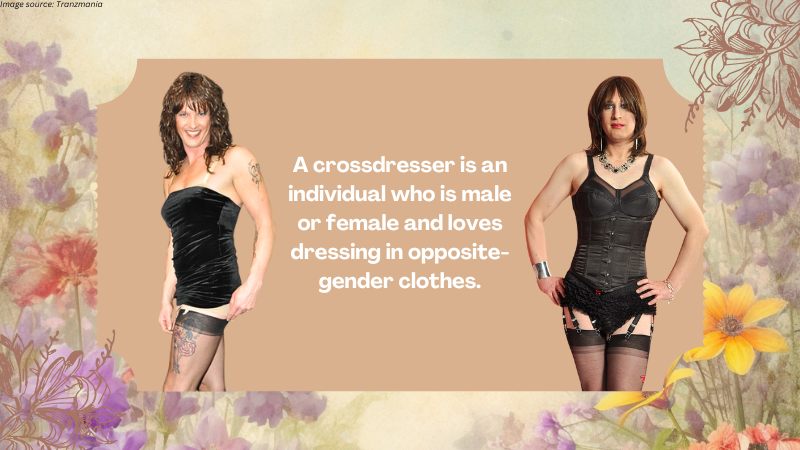
A crossdresser is an individual who is male or female and loves dressing in opposite-gender clothes. A crossdresser may relish dressing in feminine attire, such as stockings, so as to indulge in the feminine aura and identity.
Importance of Recognizing and respecting diverse identities
We love recognizing and respecting diverse identities as sapphics because it helps us in sharing the following;
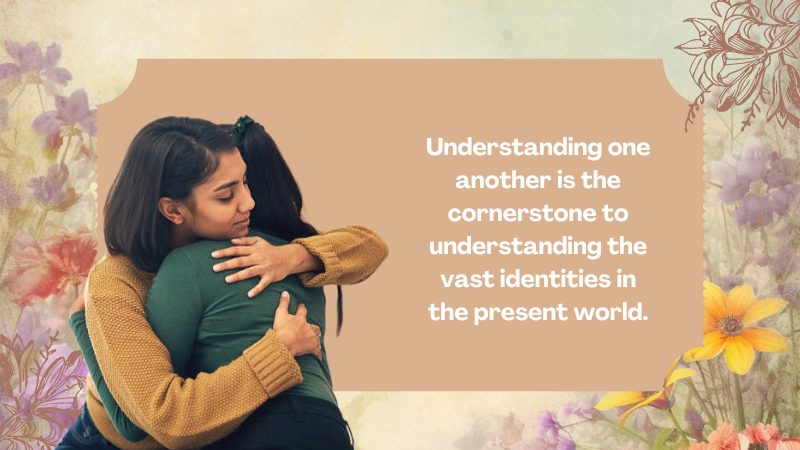
Inclusivity
While recognizing the vast gender identities that include lesbians, Sapphic, and crossdressers, we are able to embrace these new orientations for inclusivity.
Further, by recognizing diverse genders, we are able to include them in spaces such as the workplace, education, and society at large.
Inclusivity, where people of vast identities are recognized despite any stigma, promotes a value-shared community that works to create a sense of belonging.
Understanding
The human scope is complex and thus cannot be captured by one specific identity or persona.
Understanding that there are Sapphic individuals, as there are lesbian gender-identifying individuals who may have varying needs and preferences, can stoke the understanding in us to accept the diversity in our being.
Understanding one another is the cornerstone to understanding the vast identities in the present world.
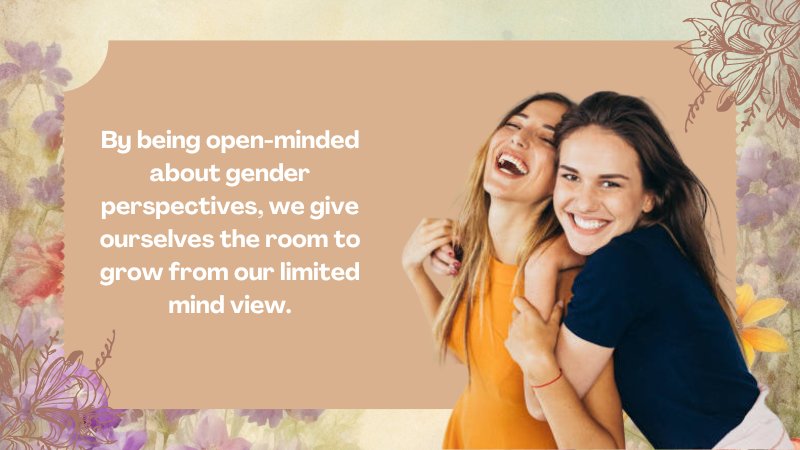
For Stronger Relationships
How would women know what they love if they did not understand their needs as women? Our body changes, and if we did not have the cognizance of our plight as women?
Well, that is why Sapphic spaces offer a priceless bond for women, as that is where a diverse identity comes in.
In gender-diverse spaces, we have a stronger relationship with each other, having understood each other’s needs, pain, joy, and plight, which is a humbling experience to behold.
Personal Advancement and Growth
Learning what a lesbian is like, what ticks us on or off about it, and the specific pronunciation that we like to use as sapphics is a significant way to thwart our subconscious biases, stereotypes, and harmful prejudices that affect gender identities.
Instead, we will choose to expand on how we view others’ identity, their pain, experiences, and challenges, which is a free way to personal growth. By being open-minded about gender perspectives, we give ourselves room to grow from our limited mind view.
A Brief History of Sapphic Identity
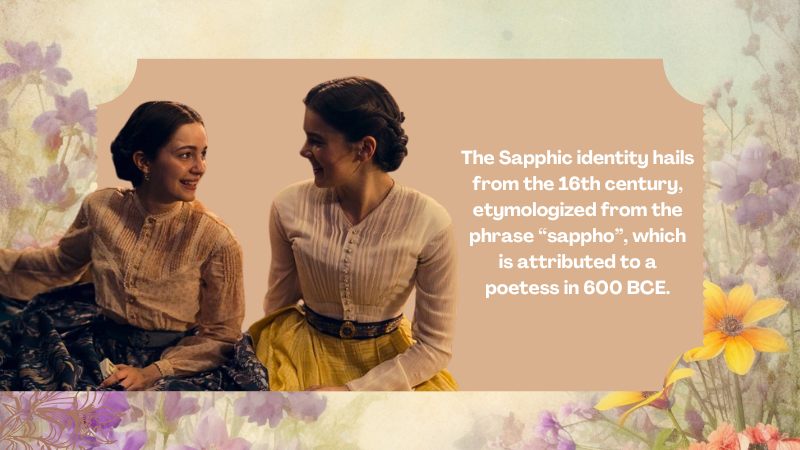
The Sapphic identity hails from the 16th century, etymologized from the phrase “Sappho,” which is attributed to a poetess in 600 BCE.
Because of the poetess’ endearing poetry, it was not until later in the 1890s that the term gained momentum to include sexual encounters, interactions, and intimate dealings between women.
In this case, it was not until later, in 1890 that the noun forms, which is Sapphism, came up to mean the homosexual happenings between women. Hence, the rise of the Sapphic identity is attributable to Sappho.
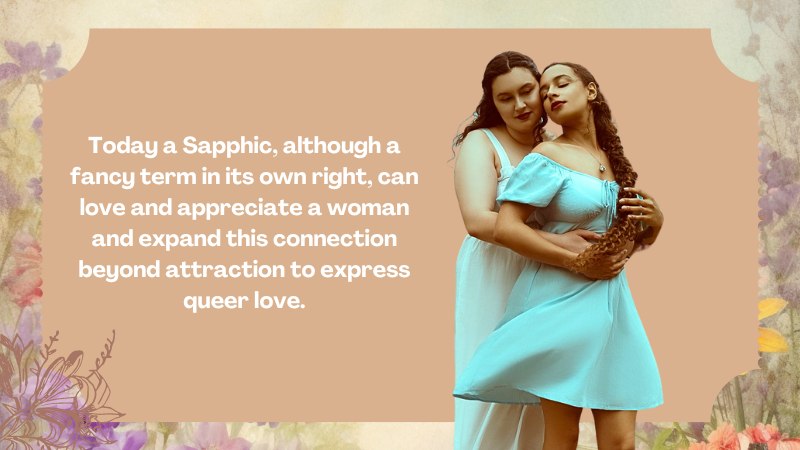
Sappho was known for the desire, love, and affection that would exist between women, and she wildly wrote about this, giving it more emotional and sexual connotations as the years went by.
Today a Sapphic, although a fancy term in its own right, can love and appreciate a woman and expand this connection beyond attraction to express queer love.
Key differences between Sapphic, Lesbian, and Crossdresser
Here are some key differences that separate Sapphic, Lesbian, and crossdresser figures
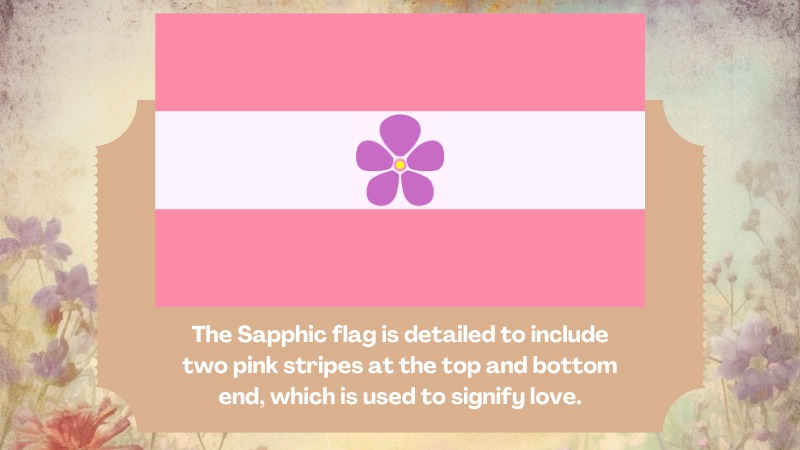
The Identity Flag
The Sapphic flag is detailed to include two pink stripes at the top and bottom end, which is used to signify love. It also comes with a lavender stripe, which is detonated to a flower.
Other versions of the Sapphic flag include paired violet that highlights the affection between women. Other versions also have a singular violet.
The lesbian and crossdresser flag, on the other hand, comprises 7 colors, all of which represent the vast genders. The crossdresser flag falls into the pride spectrum, thus falling under the lesbian umbrella of the flagship.
Romantic Orientation
While both Sapphics and lesbians are romantically inclined towards romantic attraction to women, a crossdresser can be romantically attracted to any gender identity, including men, women, or pansexual individuals.
Worth noting is that a Sapphic may not be sexually attracted to a woman but simply loves a woman’s existence, while a lesbian is explicitly attracted to a woman sexually and romantically.
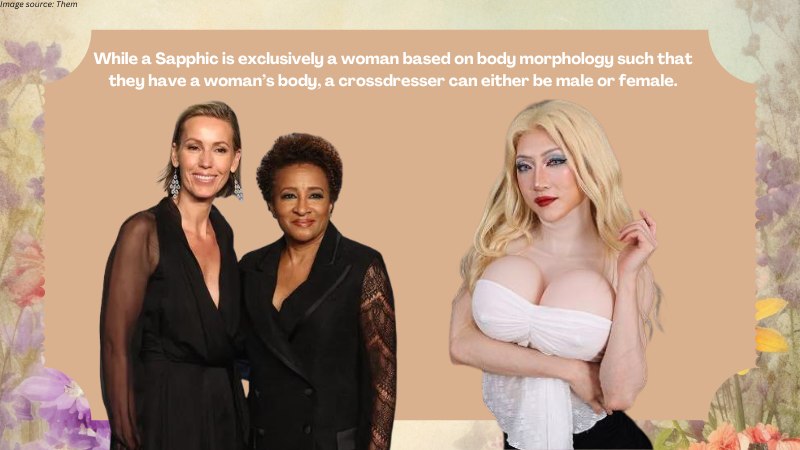
Gender orientation
While a Sapphic is exclusively a woman based on body morphology such that they have a woman’s body, a crossdresser can either be male or female.
A lesbian, on the other hand, is a woman who is attracted to another woman. Overall, what matters is the feeling that suits an individual.
Sapphic Underrepresentation in Society
Sapphic underrepresentation in the society is not unheard of. However, we can ensure Sapphic representation by doing the following;

Gender Identity Education
Educating ourselves about Sapphic identity is integral in helping us learn about the vast nature of this group of people.
We learn about the confusion between this identity and lesbian tropes the same way we are able to learn about how Sapphic individuals differ in sexual orientation, race, age, and ethnicity.
Since it is an umbrella term, learning about Sapphic identity is integral to fostering representation for a group that is rarely represented.
Let us Listen Actively
We must listen actively to Sapphic individuals when they decide to share their journeys and stories.
Listening actively will help us appreciate the nuances between Sapphic identities and other identities that are commonly used interchangeably in the Sapphic space.
Active listening fosters representation as we are able to listen without judgment while being empathetic and understanding.
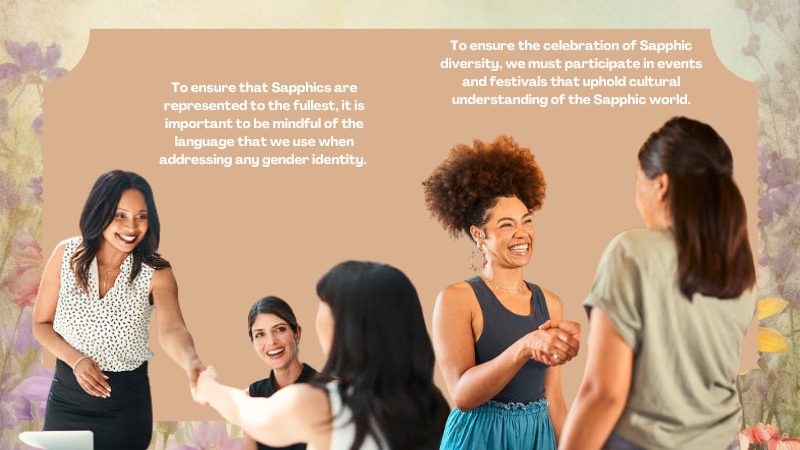
Use of Inclusive Language
To ensure that Sapphics are represented to the fullest, it is important to be mindful of the language that we use when addressing any gender identity.
For the most part, Sapphics will refer to themselves as women; however, since it is an umbrella term, understanding that masks are also Sapphic but can prefer male pronouns is integral in ensuring visibility for vast gender identities.
Sapphic Diversity Celebration
To ensure the celebration of Sapphic diversity, we must participate in events and festivals that uphold cultural understanding of the Sapphic world.
This includes attending pride shows, parades, and gatherings that focus on Sapphic representation as a way to show support. For instance, Pride month is a safe and effective way to celebrate Sapphic identity and presence for all that it’s worth.
Positive and Future Direction on Sapphic Identity
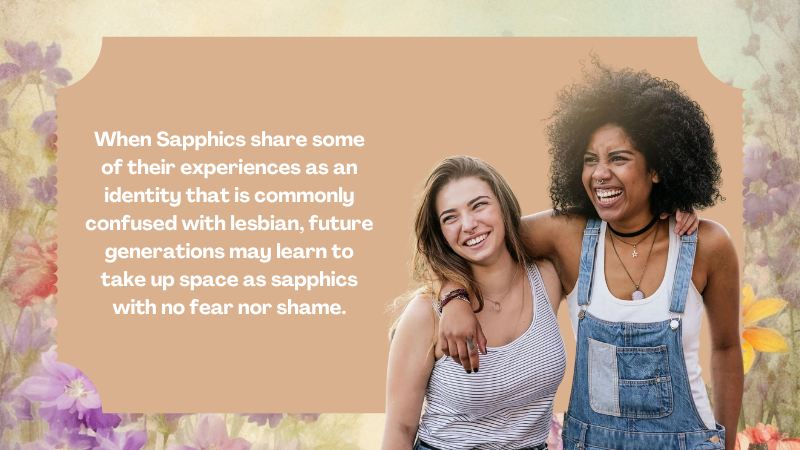
Some positive and future directions toward upholding Sapphic identity include the following.
Sapphic Media Representation
Sapphic representation in online spaces such as women’s podcasts, women’s mental health discussions online, and women’s presence in media spaces overall are some of the main positivist approaches we can use to cement our Sapphic identity.
When Sapphics share some of their experiences as an identity that is commonly confused with lesbian, future generations may learn to take up space as sapphics with no fear nor shame.
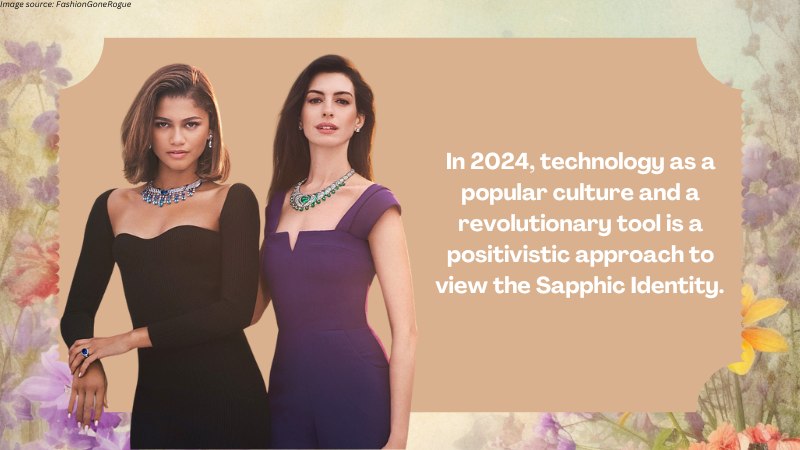
Sapphic Women on Tech
In 2024, technology as a popular culture and a revolutionary tool is a positivistic approach to view the Sapphic Identity. Sapphic women in tech will ensure that we are represented in spaces that have mostly been reserved for males.
We need more Sapphic identities in technology spaces, such as business start-ups, to ensure a more gender-diverse workforce.
Sapphic Women in Leadership
A positive future direction is to have as many Sapphic identities as possible in the political arena. The political arena is an integral space that can ensure that Sapphic identities are recognized and laws are curated to cater to this group of people.
Future generations should consider nominating Sapphic identities to uphold women’s representation in political spaces that have in the past been left to men.
Conclusion
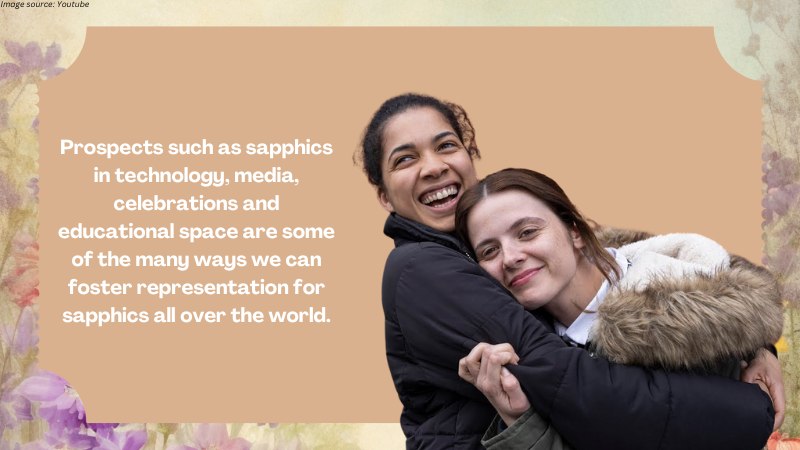
As sapphics, we love the representation that we give to women all over the globe.
Commonly confused with lesbian identity, learning what it means to be Sapphic and celebrating it as part of our identity is crucial in building a community that we can rely on and one that can offer a sense of belonging.
Prospects such as sapphics in technology, media, celebrations, and educational space are some of the many ways we can foster representation for sapphics all over the world…
- Praise vs. Degradation: What Fuels Your Feminine Journey?
- How to Support and Navigate Life with a Crossdressing Husband
- How Crossdressing Helps Me Discover Different Sides of Myself
- The Freedom of Age: Why Mature Crossdressers Shine Brighter
- Why Do So Many Crossdressers Enjoy Being Treated Like a Cumslut?
- Accepting Identity: The Black Femboy Culture Rise and Its Impact on Today’s Society
Established in 2009, We are a recognized manufacturer and seller of professional crossdressing products.
It is our aim to become not just the most creative manufacturer but also a very considerate seller, as we provide the best quality products for crossdressers all around the world.


















 Breast Forms
Breast Forms  Body Suit
Body Suit  Realistic Mask
Realistic Mask  Femini Girdle
Femini Girdle Hip & Butt Enhancement (8)
Hip & Butt Enhancement (8) Penis Prosthesis
Penis Prosthesis Fake Muscle
Fake Muscle Bikini
Bikini  Wig
Wig  Corsets
Corsets Course
Course service@roanyer.com
service@roanyer.com +8618652200711
+8618652200711 Facebook
Facebook YouTube
YouTube Twitter
Twitter Instagram
Instagram




